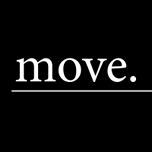Due to the unique nature of dance, having an injury management and prevention strategy in place is extremely important to ensure safe performance.
A helpful way to determine what a dancer should or shouldn’t be doing is to see a qualified Physiotherapist, who has additional expertise in dance injuries.
The aim of undertaking an injury risk assessment with a Physiotherapist, in addition to managing or preventing injuries, is to improve the dancer’s technical precision, strength and stabilisation to allow for a dancer to perform at their best.
The outcome of these assessments and the Physiotherapists’ recommendations will vary depending on a range of factors including age, gender, technical experience, expertise, and choreography. It also takes into consideration the style of dance, timing, floor work, and partner work.
Common dance injuries include:
- Ankle impingement (Posterior or Anterior)
- Ankle Tendinopathies
- Patellofemoral pain
- Lateral Ankle Sprains and ankle instability
- Shin Splints
- Stress Fractures
- Muscle strains
- Low back pain
Ankle impingement
Ankle impingement can be described as a restriction or impingement of the soft tissue or bones around the ankle or during movement. This type of dance injury can often as a result of poor biomechanics or technique, muscle tightness or imbalances around the ankle (eg FHL Tendinopathy) or bony changes (eg Os Trigonum).
There are two types of impingement:
- Posterior: pain or restriction at the back of the ankle, often worse with movements that require end-range plantar flexion (Pointing your foot)
- Anterior: pain or restriction in the front of the ankle in dorsiflexion (eg during a plie or when landing a jump)
Ankle Tendinopathies
Ankle tendinopathies usually have a gradual onset, with dancers typically experiencing this condition due to overuse. Overuse may occur after an increase in rehearsal time or changes in choreography. You can find out more about tendinopathy treatment here.
Types of ankle tendinopathy commonly experienced by dancers include:
- Flexor Hallucis Longus (FHL) – FHL is the muscle that “claws” the big toe when pointing the foot, and is overused in many dancers. Presents as pain or clicking in the inside of the ankle when pointing/flexing the big toe. Easily managed with correct education regarding foot and ankle control and strength, including how to point the foot correctly
- Tibialis Posterior – also presents as pain in the inside of the ankle, however usually related more to poor technique, rolling in, and loss of foot ankle control in more dynamic movements like jumping
- Achilles Tendinopathy – presents as pain in the back of the ankle, related to things like poor technique, calf strength, and foot and ankle alignment
Patellofemoral pain
Patellofemoral pain generally presents around the kneecap, and with dancers it is usually related to poor alignment and control of the knee and lower limb. It also can often be related to weakness or poor control at the hip or the foot/ankle which can affect knee alignment and control.
Lateral Ankle Sprains and ankle instability
Lateral ankle sprains and ankle instability are common in dancers dues to the high demands on the foot and ankle during jumping, landing, turning, and balancing on the foot and in demi-Pointe.
Poor treatment for ankle sprains can result in long term weakness and instability through the ankle which can then affect stability and control on the foot during dance and increase the risk of future, more severe injuries.
Find out more about ankle injuries here.
Low back pain
The high level of spinal mobility often encouraged in dance tends to put dancers at risk of back pain or injuries commonly related to things like muscular tension, facet joint strains (joints between each vertebra), stress fractures or slippage of the vertebrae relative to another.
Low back pain can be managed with appropriate treatment as well as education and retraining core and spinal strength and control.
Treatment Options
The management of dance injuries doesn’t just involve Physiotherapy, but a team approach that can involve parents, dance teachers, doctors, sports physicians, and podiatrists.
About Dance Physiotherapy
Physiotherapy treatment will start with an assessment, which includes a detailed discussion of your injury and relevant past injuries. It will also include physical assessment of alignment, posture, muscle strength, range of motion, and dance related aspects such as foot and ankle control, turnout, flexibility, and core control.
Physiotherapy for dance injuries usually involves hands-on therapy to relieve pain and regain mobility, as well as advice and education on modifications or management techniques so you can still participate in dance class where appropriate.
It also is likely to involve home exercises to strengthen your body, or structured exercise including Pilates. Treatment always aims to provide a way for you to return to dance stronger than when you left, and is tailored to your individual needs.
Find out more about the treatment options we provide for Dance Physiotherapy here.
More Information
To book see any of our experienced & qualified allied health staff about this issue, you can:
- Call us on (08) 8373 5655
- Use our Online Booking Gateway (available 24/7) to choose your appointment time
- Drop in to see us in person
- Email us on info@moveforbetterhealth.com.au




